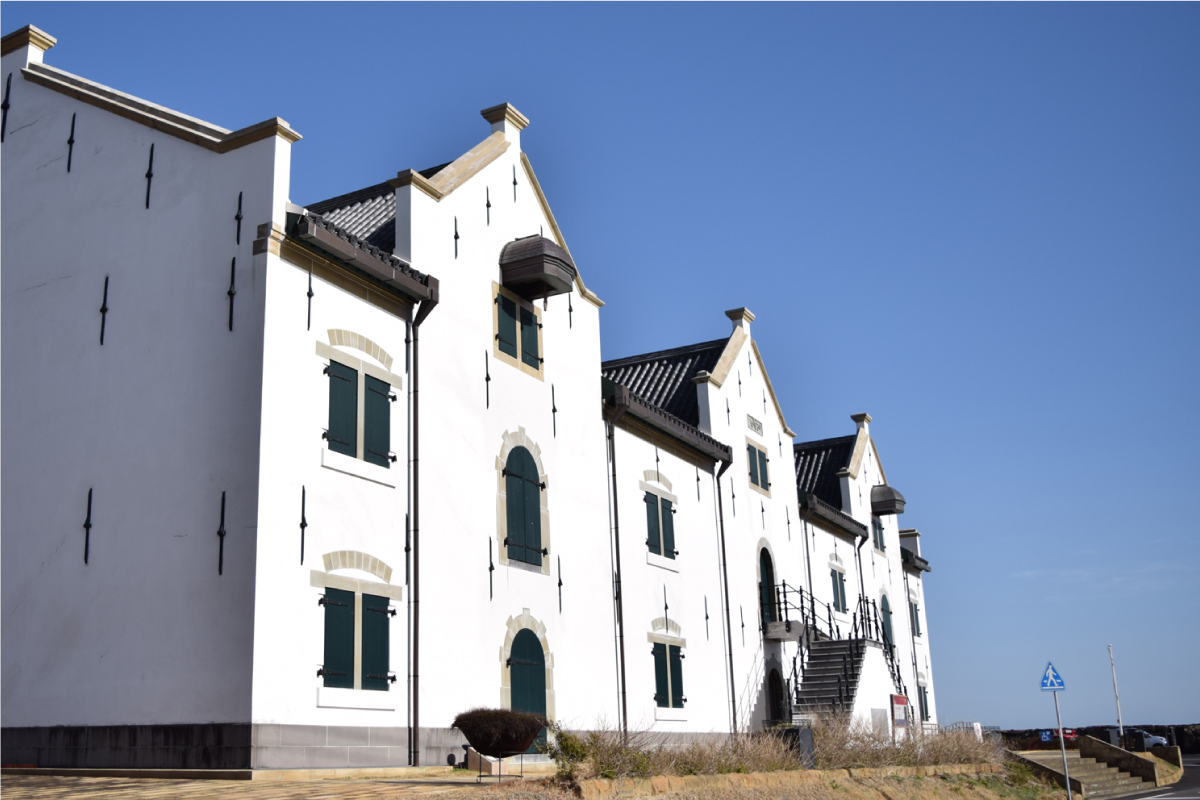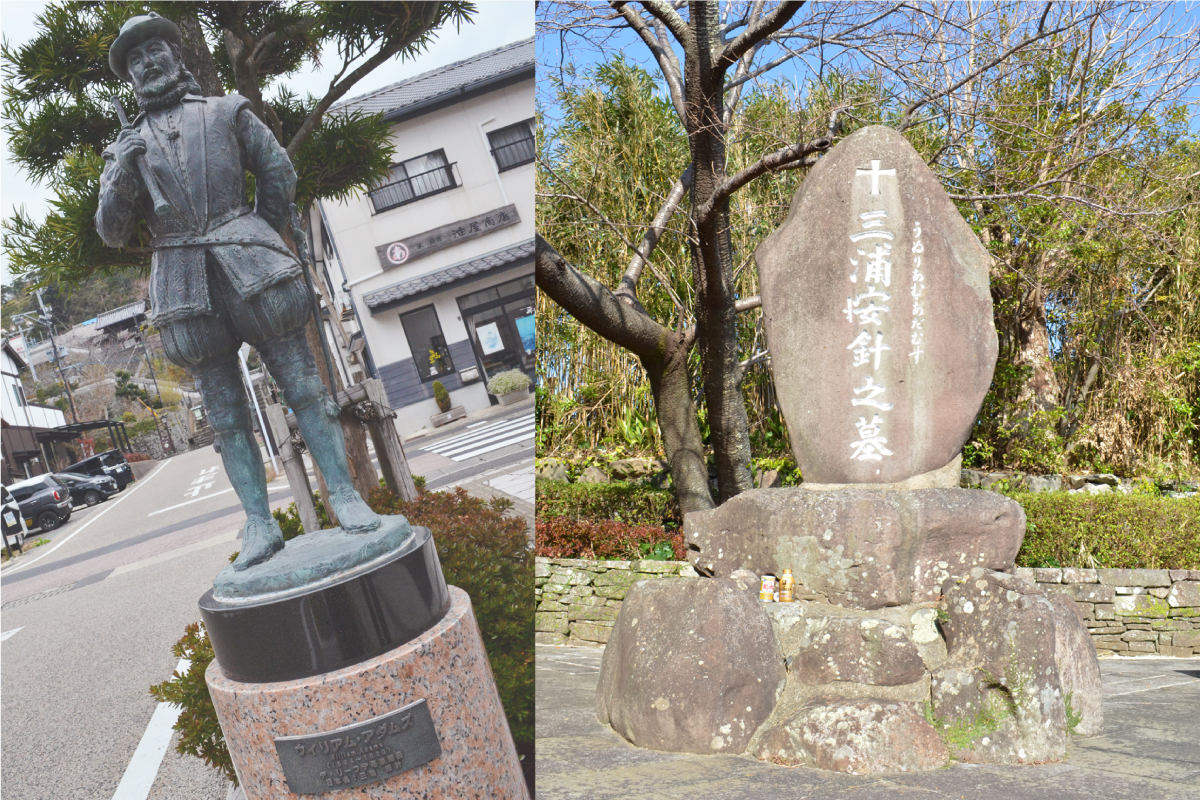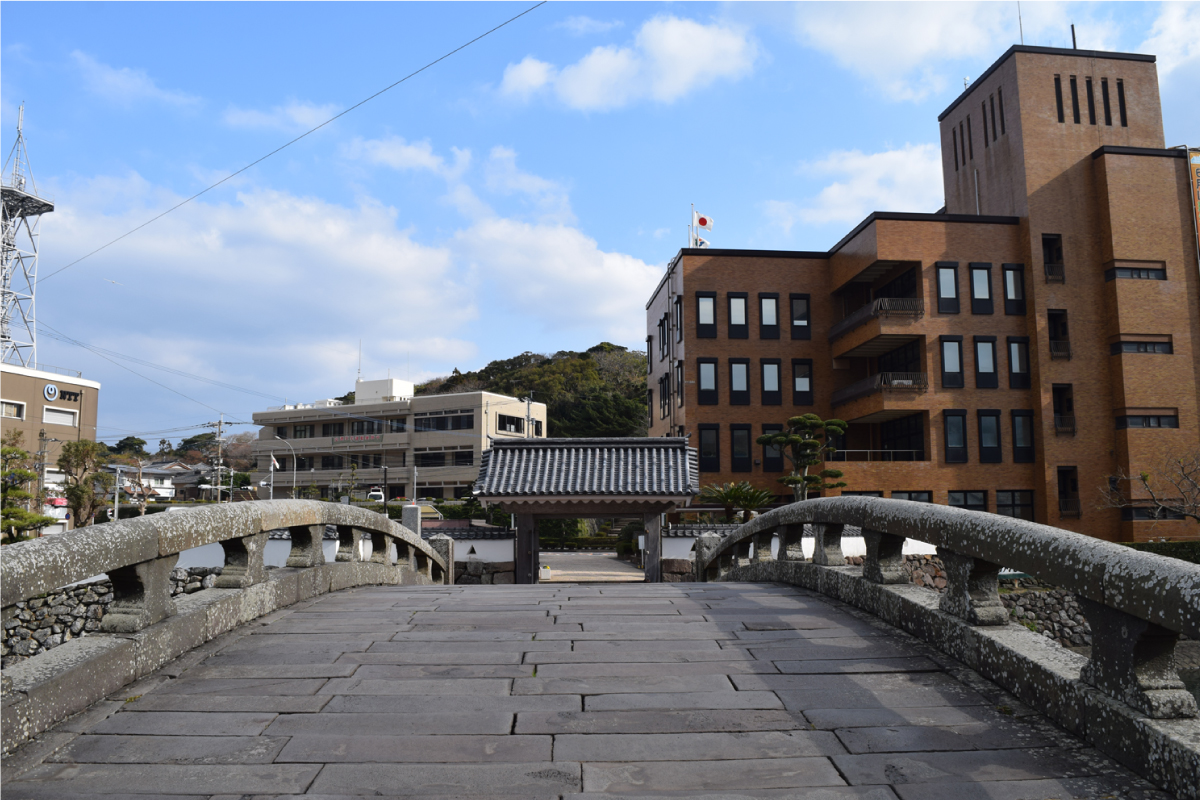Hirado, center of the Nanban trade
Hirado, located at the westernmost tip of Japan, is a place where trade with the Asian continent has flourished since ancient times.

The maritime explorations of European countries that began around the 15th century was called the Age of Discovery, and its waves reached Japan in the mid-16th century.
For about a century Hirado played an important role in the "Nanban trade" which is the trade that took place between Japan, Portugal, and Spain.
In 1609, the Dutch East India Company (VOC) was authorized by the Shogunate (Japan’s military regime) to trade in Japan. They established their trading post here in Hirado as its base.
Eventually, the Shogunate's prohibition of Christianity and the “closed-sea policy” (restrictions on individuals traveling overseas and trade with other countries) was implemented, and the Dutch trading post was forced to move to Dejima in Nagasaki, closing the curtain on the 33-year history of the Hirado Dutch Trading Post.
The Hirado Dutch Trading Post and its remains

Hirado Dutch Trading Post
Today, the site of the Hirado Dutch Trading Post is a designated national historical site, and exhibits related to its history are displayed inside the reconstructed warehouse.
The white building standing on the seaside is a sight to behold. You can almost feel the surprise and excitement that the Japanese people at that time must have felt about the impact of the flourishing overseas trade.
 Hirado Dutch Trading Post
Hirado Dutch Trading Post
Around the Hirado Dutch Trading Post, there are many original remains that convey the atmosphere of the time.
 Dutch Wharf
Dutch Wharf
The Dutch Wharf is a set of steps where people would come ashore and trading goods were loaded and unloaded from small carrier boats. The steps enabled it to be used during high- and low tide.
 Dutch Well
Dutch Well
On the opposite side of the road you can find a stone-framed well called the Dutch Well.
 Dutch Wall
Dutch Wall
Next to the stone steps leading up to the hill behind the Hirado Dutch Trading Post, there is a 30-meter-long stone wall called the Dutch Wall.
On the east side of this wall were the warehouses, gunpowder storehouse, hospital and other facilities of the Hirado Dutch Trading Post.
 Dutch Wall
Dutch Wall
It is said that this thick stone wall was built to prevent people from looking in.
 Dutch ship's anchor
Dutch ship's anchor
Further on in town, in front of the Hirado City Hall and at the foot of the Saiwai Bridge, there is a Dutch ship's anchor on display. The large, weathered anchor seems to tell long lost tales of the international trade during those days.
Visit places related to some of Hirado’s famous historical foreign figures

Statue of William Adams along the Road of History / Grave of William Adams
In Sakikata Park, not far from the Hirado Dutch Trading Post, there are various historical sites from the Age of Discovery, such as the grave of William Adams and the monument to St. Francis Xavier.
William Adams was the first Englishman to come to Japan. In Japan he is well-known by his Japanese name Miura Anjin.
He arrived in Japan on a Dutch ship and was quickly taken in by the Shogun Ieyasu Tokugawa for whom he became a diplomatic advisor. He came to Hirado in 1613.
 Anjin no Yakata
Anjin no Yakata
In the main shopping street is a building called "Anjin no Yakata", presumably the house where William Adams lived in Hirado.
His name “Anjin” is often seen when strolling around Hirado town, which shows that William Adams is still close to Hirado people’s hearts.
 St. Francis Xavier Monument
St. Francis Xavier Monument
 Hirado St. Francis Xavier Memorial Church
Hirado St. Francis Xavier Memorial Church
St. Francis Xavier, who is famous for being the first person to introduce Christianity to Japan, also did missionary work in Hirado and visited the area many times.
The St. Francis Xavier Monument in Sakikata Park was built to commemorate the 400th anniversary of Xavier's arrival in Japan.
The Hirado St. Francis Xavier Memorial Church, with its pretty green walls, also has a statue of Xavier beside the church.
The Dutch Bridge, incorporating new foreign technology

Dutch Bridge
Saiwai Bridge beside Hirado City Hall is an original stone bridge from 1702 that was built to connect Hirado Castle with the town.
 Dutch Bridge
Dutch Bridge
Before land reclamation works in the Edo period, the bay continued much further inland, so it took a long way around the bay to get to the castle.
As “Saiwai” means happy in Japanese, people must have been “happy” to take this short route to the castle after this bridge was built.
It is said that the Japanese stonemasons who were involved in the construction of the arched doors of the Hirado Dutch Trading Post taught those masonry techniques to the local stonemasons who built this bridge. Hence its nickname: The Dutch Bridge.
 Hirado Port
Hirado Port
As a center of overseas exchange, including the Nanban trade, it must have been surprising and exciting for the people of Hirado at that time to see so many foreigners come and go, and see so much new culture and technology flowing into the city.
Why don't you go on a journey to further unravel Hirado’s international history by experiencing the remains of those days around the old port?
 Houonji Bridge
Houonji Bridge
About a six-minute walk from here, you can still find the very small stone Houonji Bridge, which is said to have been built as a test before they constructed Saiwai Bridge.
It gives us a nice insight into how the people at that time went through trial and error in order to incorporate new Western technology.

